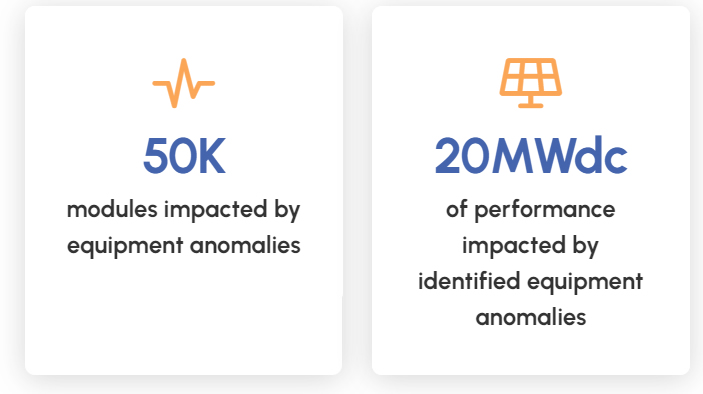The asset owner needed to quickly assess the damage to prepare for possible insurance claims and develop a remediation strategy. Raptor Maps' analysis found more than 20MWdc of site capacity was impacted by equipment anomalies.
 Rapid Assessment of Wind Damage
Rapid Assessment of Wind Damage

Case Study from | Raptor Maps
After a severe storm with wind gusts of 90MPH, the owner of a 300+ MWdc site needed to quickly assess the damage to prepare for a possible insurance claims process and develop a remediation strategy to restore power production. Raptor Maps analysis included findings beyond weather damage, providing the owner with a more comprehensive strategy to get energy yield back on-track.

Key Takeaways
The asset owner needed to quickly assess the damage to prepare for possible insurance claims and develop a remediation strategy. Raptor Maps' analysis found more than 20MWdc of site capacity was impacted by equipment anomalies. The 300+ MWdc site was digitized and converted into a geospatially-enabled digital twin in the Raptor Solar platform to streamline remediation.
The Challenge
After a severe wind storm with wind gusts of more than 90MPH (145 km/hour), the owner needed to quickly assess the damage to prepare for possible insurance claims and develop a remediation strategy to restore power production.
The Solution
The owner opted for a comprehensive inspection to understand both the damage from the extreme weather event and other equipment defects in order to develop a prioritized remediation strategy. Given the urgency and ongoing weather challenges, the inspection was conducted in 3 different sections by priority with the first team on-site within 24 hours of the customer reaching out to Raptor Maps.
The Result
All analysis results were delivered in under 2 weeks, with the higher priority blocks being analyzed, digitized, and delivered first. The analysis found that more than 20MWdc of site capacity was impacted by equipment anomalies, caused by both weather damage and other drivers (such as module electrical defects), resulting in over $1.8M annualized revenue losses if unaddressed.
The 300+ MWdc site was digitized and converted into a geospatially-enabled digital twin in the Raptor Solar platform, with the analysis results overlaid with precise GPS coordinates for each detected anomaly. The comprehensive view of DC health, damage from weather events, and detailed view of underperformance drivers allowed for the owner to create a comprehensive and prioritized remediation strategy to get the site back on-track.
The content & opinions in this article are the author’s and do not necessarily represent the views of AltEnergyMag
Comments (0)
This post does not have any comments. Be the first to leave a comment below.
Featured Product

